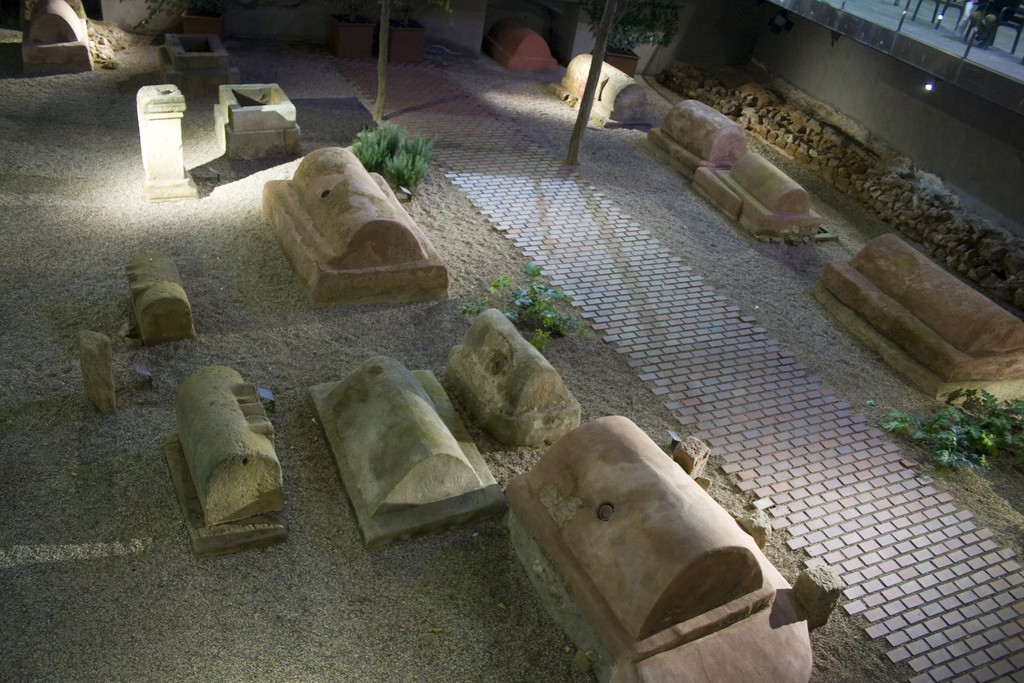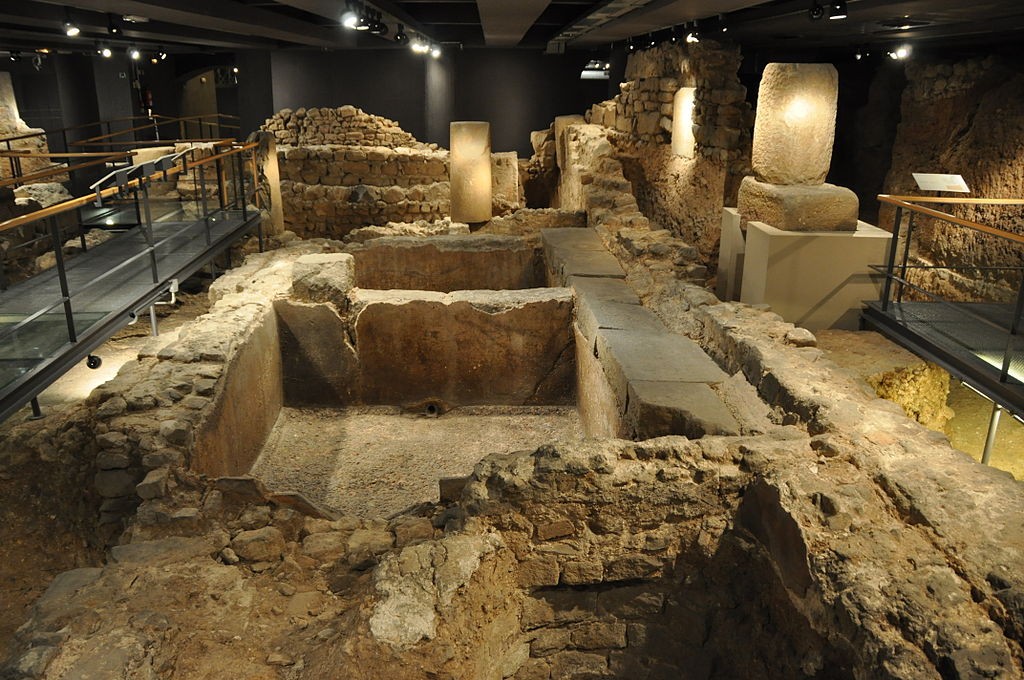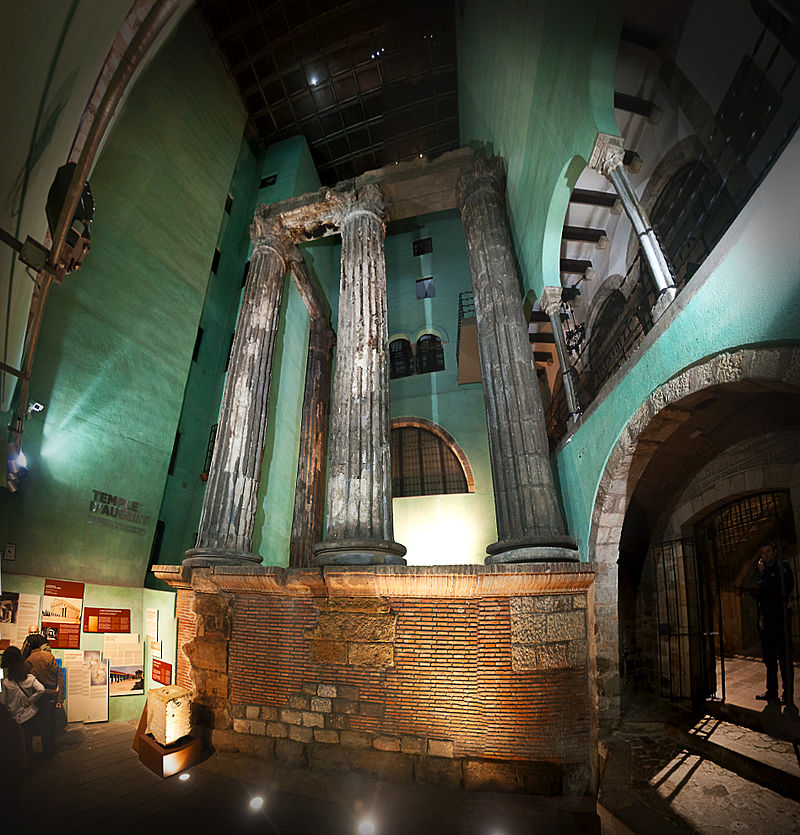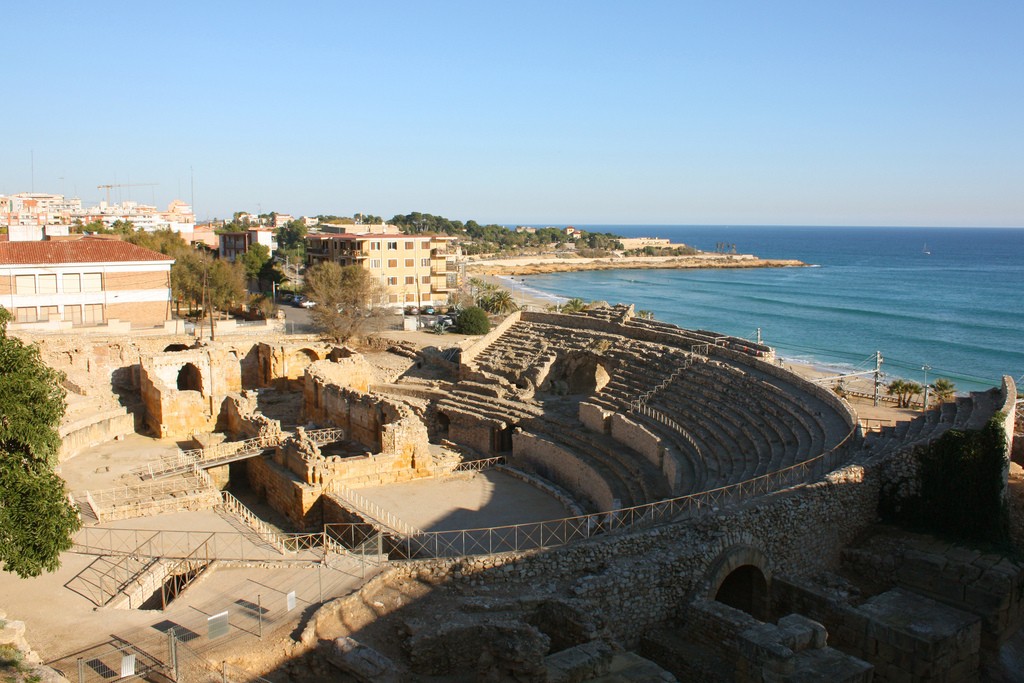The tourist ambles his way into an open square. He collapses on a patch of emerald grass and passes out.
The summer moon fills the night sky. It’s soft glow spills into the square, giving the building-scientists enough light to see that, just beyond the fallen body of another tipsy tourists lies an ancient Roman graveyard– hard to believe amid the somber apartment buildings, tapas bars and boutiques.
Yet this is Barcelona – the city that’s much older than you ever thought.
Barcelona’s streets play witness to this familiar scene every night during the summer. Tourists bumbling about under the influence of a litany of cocktails and beers are unaware — alcohol be damned — of the immense history which surrounds them as they try to keep their balance amid the maze of old walkways in Barcelona’s Ciutat Vella, or Old City.
The Old & New
This juxtaposition is what makes Barcelona an intoxicating city for savvy travelers who want to experience the fascinating — and often confounding — marriage between a modern European city and it’s ancient Roman roots. And Barcelona is just that, a joyous juxtaposition between old and new.
Learning about the city’s ancient Roman roots is a process best experienced within the lower levels of the Barcelona City History Museum, a tremendous exhibit of heritage tucked away in an unassuming building just steps off the corner of Placa del Rei in Barcelona’s Old City.
It is here within the calm confines of this tranquil history-haven that you’ll discover that the city which often ellicits mental images of mocha-skinned women striding confidently down Passeig de Gracia is actually a woman far more aged and far more seasoned, proud of her weathered countenance and the more than 2,000 years of history it’s witnessed.
Barcino
Barcelona’s original Roman name was Barcino, and over time it was adapted to the name it bears today. Back at the turn of the first millennium, Romans ruled the Iberian Peninsula. However, unlike today’s Spain, where Barcelona is the queen of the coast, the city was just a colony. In fact, Tarragona (then known as Tarraco) was much more important to the Romans.
Though Barcelona stood in Tarragona’s shadows back in the first and second centuries, it was still an important place for trade and commerce as people ventured up and down the coast to and from the heart of the empire. Roman authorities constructed walls around the original old city in order to protect it from invaders. Parts of that ancient wall still exist today. In fact, Barcelona’s famed Mercer Hotel is built into one of those guard towers.
City History Museum
The life which pulsed inside the city walls is evident within the ruins of the Barcelona City History Museum, which is part of the network of MUHBA museums which protect and promote the city’s recent and ancient history. Much of the museum’s claim to fame is housed beneath ground level, where a metal catwalk careens its way through the ruins of an old Roman neighborhood.
The highlights: storage structures for wine and for garum, a fish paste the old empire devoured as frequently as it devoured foreign territories.
The Temple of Augustus
While the city history museum will have you looking down, the pillars of the Temple of Augustus will have you looking up.
Back in the first century before Christ, Roman builders constructed a temple which gave Barcelona’s residents and wayfarers a space in which they could worship Emperor Augustus. That temple is all but gone now, with just four extant pillars and a few other pieces.
These pillars are a magnificent reminder of Barcelona’s identity as an ancient city. They now stand in the courtyard of a Gothic building just a few meters away from Plaza Sant Jaume. Though popular with group tours, tourists who travel by themselves or with friends often miss this amazing spot.
More Roman History
Barcelona, as we’ve said, isn’t Spain’s only example of a city with ancient roots. Tarragona, a city about 90 minutes to the south, has a collection of Roman ruins far more impressive than what Barcelona offers.
Tarragona’s sterling ruins boast an amphitheater whose scope and seaside location will shock you, not only because of its beauty but also because you probably never thought of Spain — Tarragona, especially — as a haven for Roman ruins. But it’s true, and Tarragona is, in our opinion, the country’s flagship location for seeing Roman ruins. Here’s a preview:
Roman Tombs Photo Credit : Weldon Kennedy, Flickr Creative Commons
Augustus Pillars Photo Credit: Wikipedia
MUHBA Photo Credit: Wikipedia
Tarragona Photo Credit: Jordi Payá, Flickr Creative Commons










